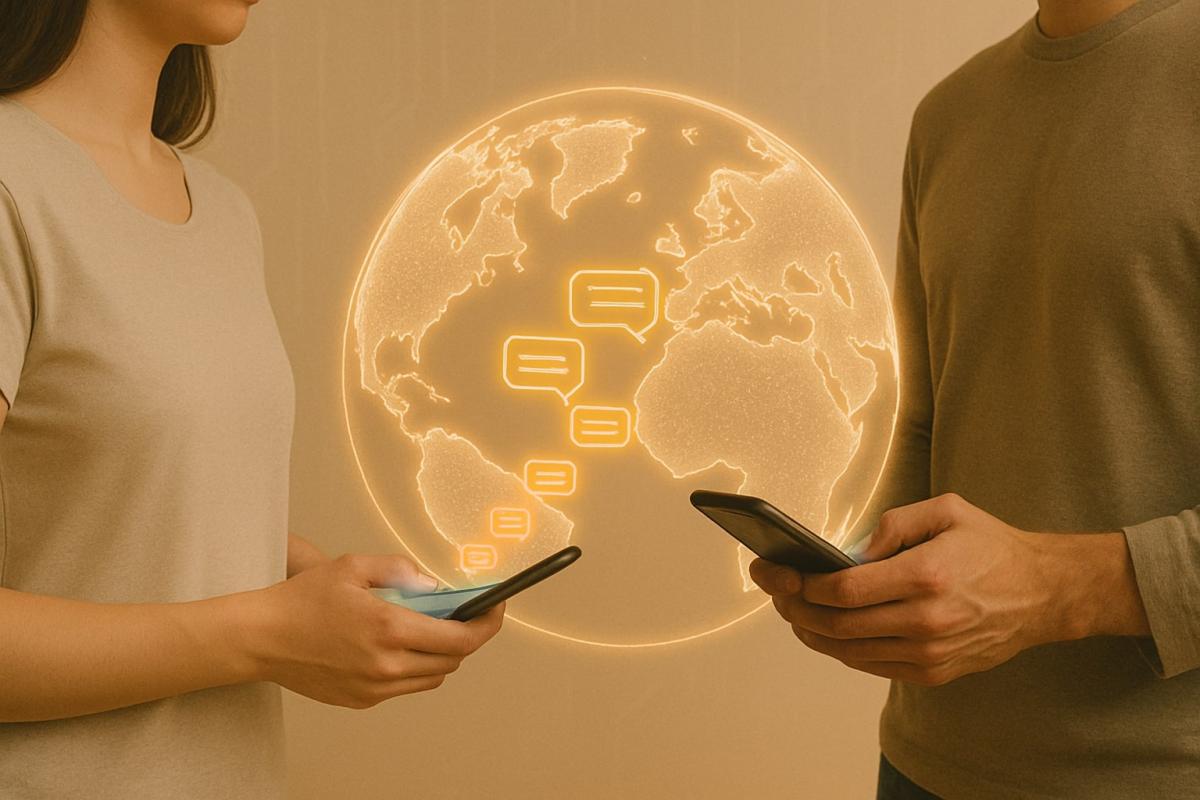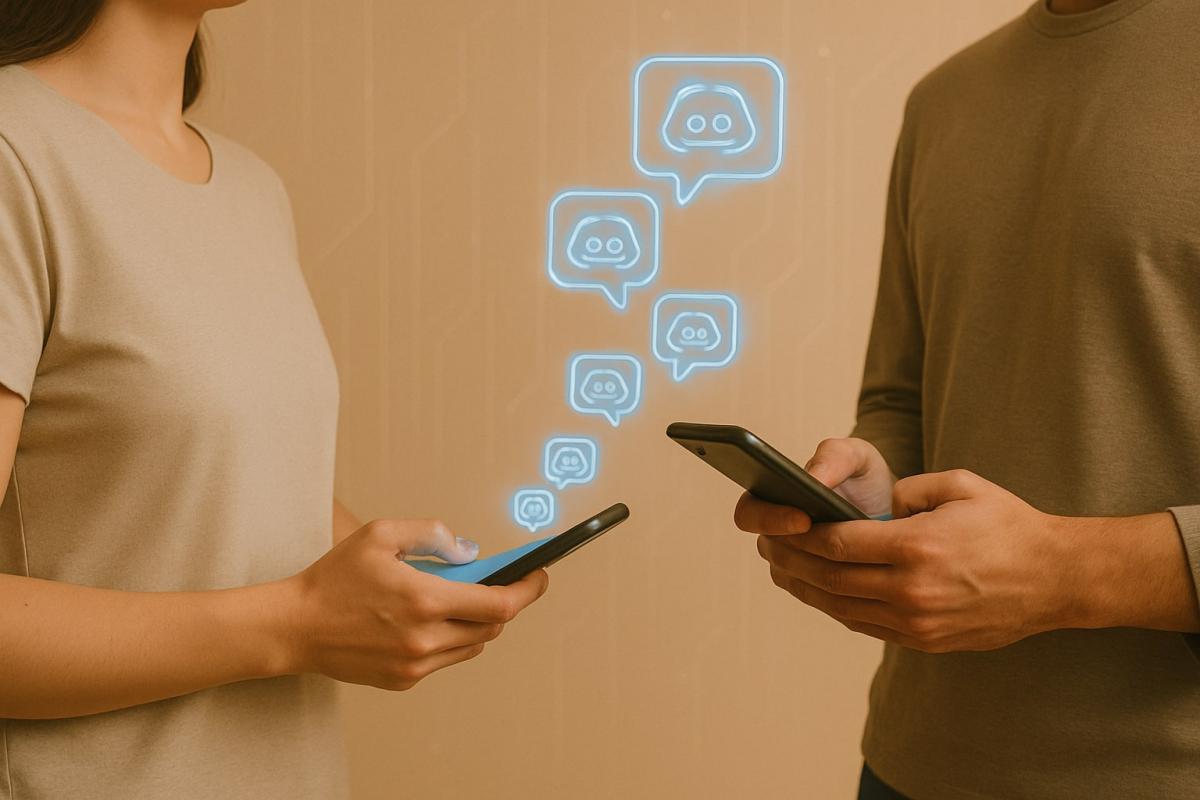The internet has changed how we find love and friends. From Tinder to Instagram, it connects people through screens but also brings challenges and risks, including superficial relationships or fake profiles. Let's explore together how the online world is changing our relationships, what it gives us and what it takes away, and take a look at what the future holds with virtual reality.

Love at first click, friendships through a screen – the internet has given us the chance to connect with anyone, anywhere. But behind the gloss of social networks and dating apps lurk shadows: superficial relationships or fake identities. Discover with us how the digital world shapes our relationships.
Online dating: Love in minutes
The rise of dating apps
Dating apps like Tinder, Bumble, or the Czech Badoo have changed the way people look for love. We are no longer limited to meeting in a café or at a party – all it takes is a smartphone and a little time.
Statistics show that in 2024, over 300 million people worldwide used online dating platforms. Most available platforms allow filtering of potential partners by interests, age, or location, which saves time but also changes the dynamics of relationship building.
Benefits and pitfalls of digital romance
Online dating brings freedom and accessibility. People who would otherwise never meet have a chance to connect. Introverts or those living in remote areas gain new opportunities. On the other hand, the speed and quantity of contacts can lead to superficiality.
This brings us to the phenomenon of the “swipe culture,” which often reduces people to photos and short descriptions, making it challenging to form deeper emotional connections. Additionally, some users face the “paradox of choice” – too many options leading to indecisiveness.
Once you manage to catch someone, the hard reality hits, where you have to move into the offline world. Fortunately, studies show that couples who met online have a similar chance of long-term relationships as those who met through traditional means.

Digital friendships: Connections through screens
Social networks as bridges between people
Social networks like Facebook, Instagram, or Discord allow maintaining friendships at a distance. People who relocated due to work, study, or life changes can stay in touch with friends and family. Moreover, groups on social networks connect people with the same interests – whether they are book, game, or travel enthusiasts.
Virtual friendships are thriving
Digital friendships, however, face challenges. Communication through text messages or video calls lacks non-verbal elements like voice tone or body language, which can lead to misunderstandings. On the other hand, the online environment allows people to be more open, as anonymity or distance often reduces their fear of judgment. For example, gaming communities on platforms like Twitch or Discord often form strong bonds among people who have never physically met.
Risks of isolation
Even though the internet facilitates connections, it can paradoxically contribute to feelings of loneliness. People spend hours on social networks, but superficial interactions, like “likes” or short comments, may not replace actual human contact. Research supports this, suggesting that excessive social network use can increase feelings of anxiety, especially among the younger generation.
New forms of communication: Emojis, memes, and gifs
The internet has introduced new ways of expressing emotions. Emojis, gifs, and memes have become a universal language that transcends language barriers. For instance, a simple smiley face can express joy, sadness, or irony faster than words. While enriching communication, they can also distort complex emotions, sometimes leading to misunderstandings.
Memes also contribute to communication, becoming a phenomenon across cultures. A simple share of a funny meme can strengthen friendships or create a sense of belonging in online communities. However, the fast-paced and consumable nature of these interactions may distract from deeper communication and understanding.

Challenges of the digital age: Trust and authenticity
One of the biggest risks of online relationships is the lack of trust. This is exemplified in the phenomenon of “catfishing,” where someone creates a fake identity. People may pretend to be someone else to gain attention or manipulate others. This makes building trust difficult, especially in romantic relationships.
Another challenge is protecting personal data. Sharing information online can lead to abuse, whether it’s hacking accounts or publicizing private messages. Unfortunately, the only protection is being cautious and knowing how to protect your privacy to avoid negative impacts.
The future of interpersonal relationships
The internet will continue to transform how we connect and maintain relationships. With the development of technologies like virtual reality or artificial intelligence, new possibilities for even more intense digital interactions open up. For instance, virtual worlds like the Metaverse promise environments where people can meet in realistic digital spaces.
Experts, however, stress the importance of finding a balance between the online and offline world. Although the internet facilitates connections, real relationships require time, effort, and especially personal contact. The key is to use technology as a tool that helps us, not one that replaces human interaction.
What is Wi-Fi 7? What changes does it bring and when does it make sense to switch

Today's home Wi-Fi network is under increasing pressure. It has to handle video calls, online gaming, and dozens of smart devices. The new Wi-Fi 7 standard offers a solution that takes wireless connectivity to the next level. We'll explain what this standard means in practice and why it might be crucial for the future of home and business networks.
What is DNS? Everything you need to know about its functionality and setup

When you type a website address into the browser, the correct page loads in an instant. This is managed by the DNS system, without which the internet as we know it would not exist at all. In this article, you will learn what DNS is, how it works, what types of records it contains, and why it is important for both speed and security of the connection.
How does fiber optic internet work and what do you need for its installation?

Fast and stable connection is a basic necessity in every household today. The solution is fiber optic internet, which works differently than regular cables and offers greater reliability to users. We'll explain how this technology works in practice, what it entails to run a fiber optic cable to your home, and what equipment you’ll need to keep everything running smoothly.
Cloud gaming – the end of consoles in sight?

Cloud gaming allows you to play games from anywhere without the need for expensive hardware. In this article, you'll learn how game streaming works, what advantages and limitations it brings, and which services are leading the way today. And most importantly: can it really threaten traditional consoles?
Chips under the skin and in the head. The future is closer than we think

Brain microchips already allow controlling a computer with mere thoughts. In the article, you will learn how they work, what they have brought to the first users, and what promises scientists and Elon Musk associate with them. Along with hopes, questions about safety, ethics, and where this technology might take us also arise.
What consumes the most data on mobile? YouTube, Spotify, Netflix and other apps under scrutiny

Mobile data usage can sometimes be unpleasantly surprising. The most are consumed by video streaming and music services – how much data does YouTube, Netflix or Spotify use? And what about other apps like social networks, maps or video calls? Check out the overview of the biggest data guzzlers and find out how to keep mobile data under control.